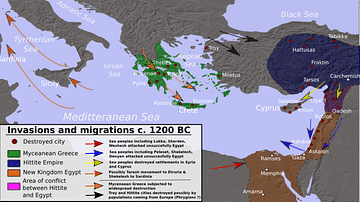Illustration
This map illustrates the early global migrations of Homo sapiens—our species’ remarkable journey from Africa to every inhabitable continent. Tracing movements that began over hundreds of thoussands of years ago, it highlights how small bands of early humans ventured out of eastern Africa and gradually spread across the globe.
These migrations unfolded in waves, shaped by shifting climates, coastlines, and ecosystems. As Homo sapiens encountered new environments, they adapted with ingenuity—developing tools, social structures, and symbolic expression. Along the way, they also coexisted and occasionally interbred with other hominins, including Neanderthals in Eurasia and Denisovans in Asia. By c. 20,000 BCE, humans had reached the Americas, likely via Beringia, completing their expansion across the world. These movements not only fostered genetic diversity but also sparked the earliest foundations of human culture, technology, and interconnection—laying the groundwork for the civilizations to come.
About the Author
Cite This Work
APA Style
Netchev, S. (2017, May 09). Map of Early Human Migrations. World History Encyclopedia. Retrieved from https://www.worldhistory.org/image/6605/map-of-early-human-migrations/
Chicago Style
Netchev, Simeon. "Map of Early Human Migrations." World History Encyclopedia. Last modified May 09, 2017. https://www.worldhistory.org/image/6605/map-of-early-human-migrations/.
MLA Style
Netchev, Simeon. "Map of Early Human Migrations." World History Encyclopedia. World History Encyclopedia, 09 May 2017, https://www.worldhistory.org/image/6605/map-of-early-human-migrations/. Web. 25 Jun 2025.








